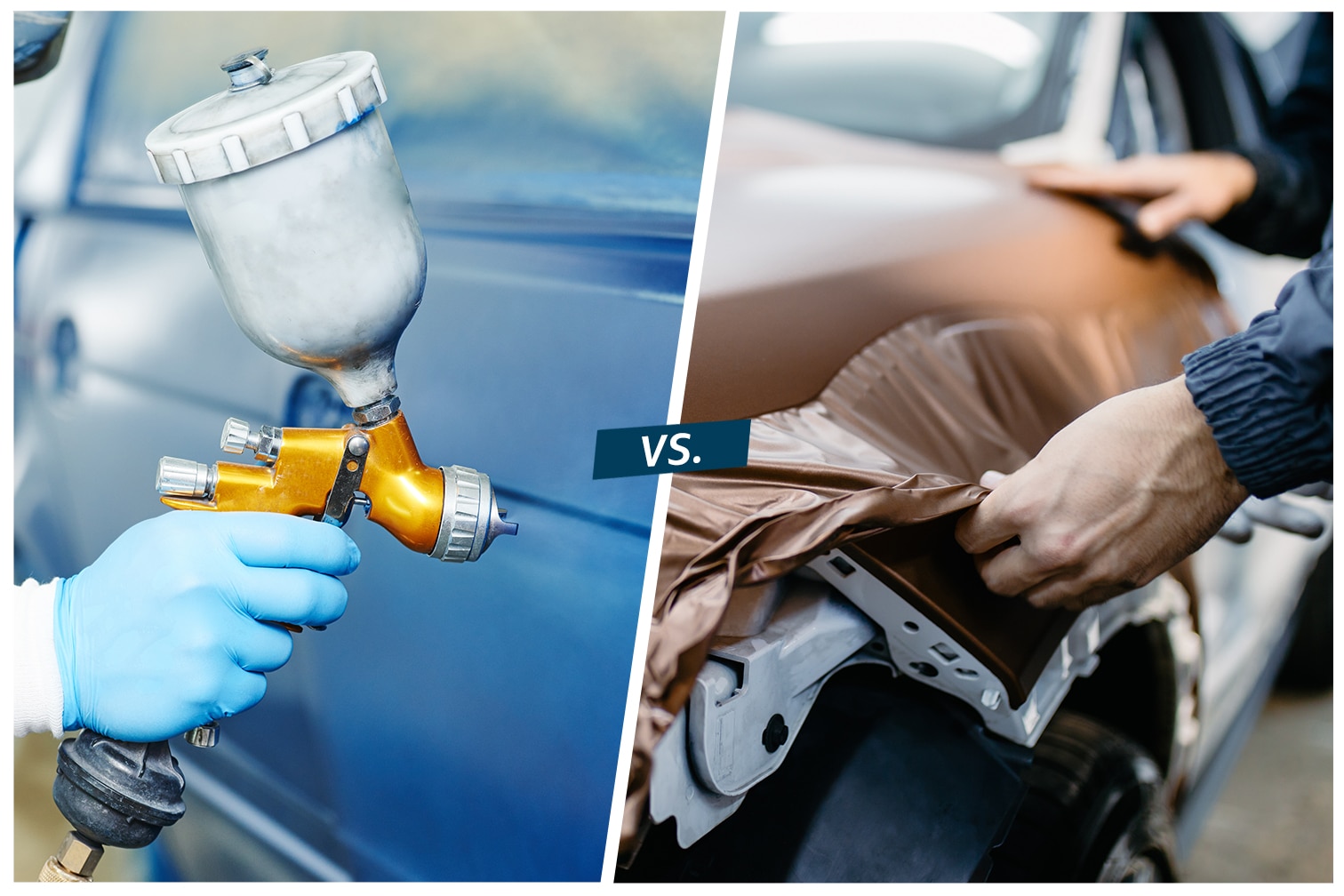Car Wrap vs. Paint: Which Is Better?
If you want to address your car’s dull or damaged finish, you have options.
 Shutterstock
Shutterstock
Wraps have been around for decades. Most commercial vehicles you see with company logos on them are wraps, not paint jobs. But it’s only been in the last few years that vehicle wrapping has become affordable for the average driver. Some use wrap technology for effects like mirror or matte finishes or wild graphic designs, but solid-color vinyl wraps are available, too. You can duplicate a stock color or create one that the factory doesn’t offer.
Is it better than a paint job? Like anything, there are pros and cons to each.
Car Wrap vs. Paint: How Much Does It Cost?
Prices for wraps vary from shop to shop and region to region, with labor costs and vehicle size being the biggest variables. Generally speaking, a professional vehicle wrap costs at least $2,000, according to J.D. Power, and many cost more than that. Specialty finishes and detail work like wrapping the door jambs can push the price past $10,000. That puts wrapping in the same ballpark as a mid-tier to upper-tier paint job.
Car Wrap vs. Paint: When Is a Car Wrap Better?
When it comes to a quick turnaround, wraps win over paint. Paint jobs require prep time—sanding, primer, curing, coat application—in addition to drying time for the paint itself. A good, thorough paint job can leave your car in the shop for up to a week. Depending on the size of your vehicle, a wrap can be done start to finish in a day or two.
Care and maintenance after the fact is another strong point in favor of wraps. You’ll extend the wrap’s life by keeping it clean with at least a weekly wash and attending to any bugs, tree sap, or other stains promptly—but waxing is never needed.
Car Wrap vs. Paint: When Is Paint Better?
You can’t just wrap a car with dents, dings, or peeling paint, however. Any physical imperfection underneath shows in the vinyl, keeping it from being a smooth application. Flaws also work against complete adhesion of the wrap to the car. That means it’s likely that much of the work necessary prior to a paint job (sanding, filling, rust removal) would need to be done before wrapping a vehicle as well.
A wrap typically lasts about five years, while a good paint job can shine for decades if it’s cared for. And although you won’t have to wax the wrap or tend to it the same way you would paint, an automated car wash with brushes or a power washer can tear the vinyl. Additionally, parking the vehicle outdoors in direct sunlight eventually will result in UV rays fading and degrading the wrap.
Wrapping is a great way to change up the color on a car you’re planning to keep. But, given that the body underneath has to be free of imperfections for the wrap to be applied properly, and that those repairs add to the cost of the wrap, it’s not an answer for a quick and cheap fix to hide cosmetic defects on a car you’re looking to sell.
Written by humans.
Edited by humans.
 Mike Hagerty
Mike HagertySorting through the hundreds of new car, truck and SUV choices on the market to find the right one for your needs gets tougher all the time. I'm here to help. I've been writing and talking about new vehicles for 25 years on TV and radio, in print and online. And my passion for cars and driving goes back even farther than that. I love design and performance, but the second-largest purchase most of us will ever make (for some of us, the largest) needs to be based on more than good looks and quick zero-to-60 times.
Related articles
View more related articles